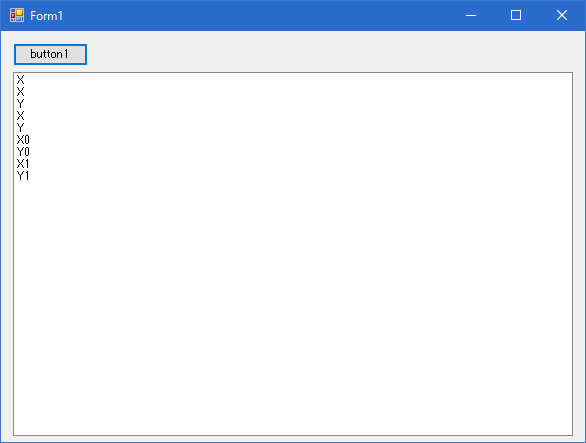準備
(なし)
デザイン
1. フォーム (Form1) にボタン (button1) を配置します。
2. フォーム (Form1) にリストボックス (listBox1) を配置します。
サンプルコード (C#)
// 名前空間の追加
// (なし)
// 構造体の宣言
struct MyStruct
{
public string s1;
public string s2;
}
// コード
private void button1_Click(object sender, EventArgs e)
{
string Ret1 = test1();
listBox1.Items.Add(Ret1);
string[] Ret2 = test2();
listBox1.Items.Add(Ret2[0]);
listBox1.Items.Add(Ret2[1]);
MyStruct Ret3 = test3();
listBox1.Items.Add(Ret3.s1);
listBox1.Items.Add(Ret3.s2);
MyStruct[] Ret4 = test4();
listBox1.Items.Add(Ret4[0].s1);
listBox1.Items.Add(Ret4[0].s2);
listBox1.Items.Add(Ret4[1].s1);
listBox1.Items.Add(Ret4[1].s2);
}
private string test1()
{
return "X";
}
private string[] test2()
{
return new string[] { "X", "Y" };
}
private MyStruct test3()
{
return new MyStruct { s1 = "X", s2 = "Y" };
}
private MyStruct[] test4()
{
MyStruct[] ms = new MyStruct[2];
ms[0].s1 = "X0";
ms[0].s2 = "Y0";
ms[1].s1 = "X1";
ms[1].s2 = "Y1";
return ms;
}
解説
メソッド test1 は string 型の値を返します。
メソッド test2 は string 型の配列を返します。
メソッド test3 は 構造体を返します。
メソッド test4 は 構造体の配列を返します。
結果

動作確認環境
Visual Studio 2015 Professional (C# 6.0)